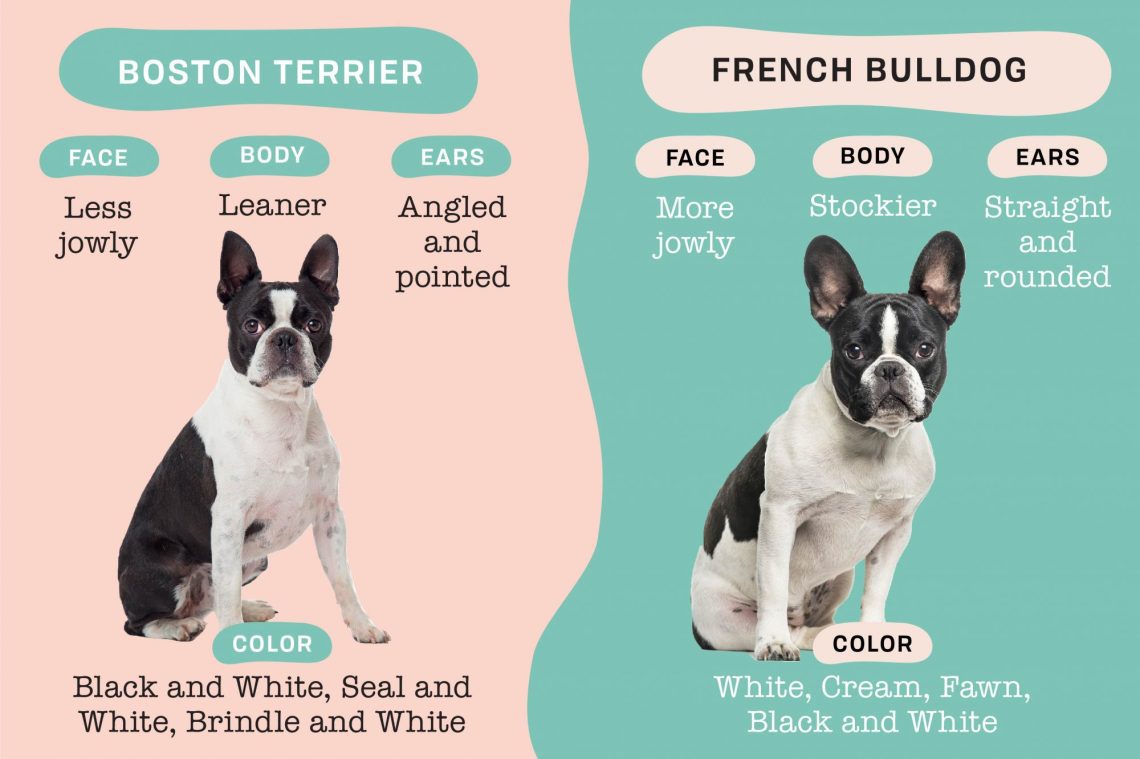
Differences between French Bulldog and Boston Terrier
Contents
A bit of history
French Bulldogs were bred in the UK from English Bulldogs and were originally used in dog fighting. Later, due to their small size, they became pets. From England, these dogs came to France, where they gained immense popularity in high society and were registered as a separate breed.
Bostonians were bred in the USA by crossing the English Terrier and the English Bulldog, as well as using several other breeds. This breed got its name from the city in which it appeared: Boston, Massachusetts.
How are these breeds similar?
It is not surprising that many people confuse the French Bulldog and the Boston Terrier, because both of these breeds belong to small molossoids, weigh 8-13 kilograms and have many common features. Among which:
- smooth coat without undercoat;
- large strong head;
- wide short muzzle;
- large erect ears;
- muscular physique;
- short tail;
- sociable and friendly character;
- propensity to direct.
Despite all of the above, these breeds still have a number of noticeable features.
French Bulldog and Boston Terrier: Differences
Character. Boston Terriers are more active and energetic – sometimes even fussy. Compared to them, French Bulldogs seem to be the epitome of calm. Also, the “Bostonians” are more trusting and benevolent towards outsiders, and the “French” do not allow such frivolity.
Complexion. When breeding Boston Terriers, burrowing hunting dogs were used, so this breed has a lighter skeleton and longer legs. If you put a Bostonian next to a French Bulldog, the latter will seem more stocky and barrel-like.
Wrinkles on head and muzzle. A characteristic feature of the “French” is deep folds on the muzzle and head. Boston Terriers have smoother skin: it forms wrinkles at the base of the muzzle only during facial movements.
The structure of the ears. The ears of the “Bostonians” are more pointed at the tips and wider apart. French Bulldogs have more rounded and close-set ears.
Permissible colors. The Boston Terrier breed standard states that all colors must have white patches. Other mandatory requirements include a white chest, a white mark between the eyes, and a muzzle outline. In the “French” colors without white spots: fawn, brindle, all-white are considered acceptable.
Relationships with other pets. French Bulldogs can be jealous of the owner of other pets and show aggression. In contrast, the Bostonians are more friendly and get along better with other animals in the house, whether they be dogs, cats or other living creatures.
Maintenance and care. Boston Terriers are healthier and less prone to hereditary diseases than French Bulldogs. But at the same time, they are prone to sabotage: when bored at home, “Bostonians” often gnaw and spoil interior items. Boston Terriers also need regular and long walks. If the owner prefers to spend time at home, it is better to choose a French Bulldog.
Knowing how these breeds differ, it is easier to decide which of these dogs is best suited for a family. Regardless of the breed, a pet will certainly become a great friend.
See also:
- Unpretentious companions: an overview of smooth-haired dog breeds
- Medium-sized dogs: the sweet spot
- The best dog breeds to keep in an apartment





